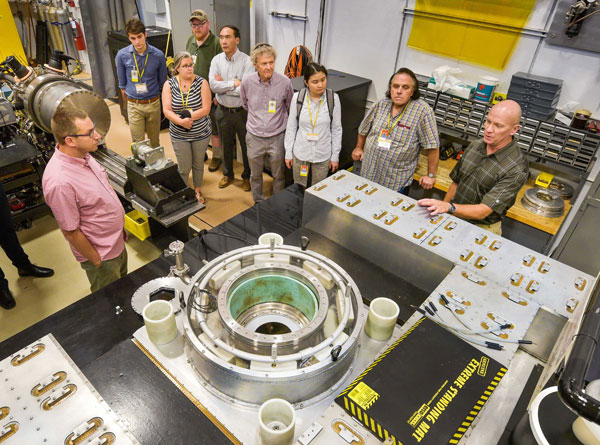A band of physicists and students from universities and national labs visited Sandia’s DICE and Z facilities in mid-August to improve their understanding of the composition of exoplanets and the Earth’s deep interior. DICE is the Dynamic Isentropic Compression Experiments facility. Z is the most powerful instantaneous X-ray source on Earth.
The visitors sought some idea of how the tremendous heat and pressure that Sandia’s huge machines bring to bear on materials might provide data for otherwise necessarily theoretical calculations of the composition and evolution of Earth’s interior and of exoplanets over geological time periods.

machine. Veloce uses electrical current to generate a sudden pressure wave that propagates through a material sample of interest. The machine can create an electrical current of about 2.2 megaAmpere, about one tenth of the current generated by Sandia’s Z machine.
The visit capped a four-day physics conference, the Consortium for Materials Properties Research in Earth Sciences, held at the Santa Ana Pueblo, with about 100 researchers attending. Sandia researcher Seth Root, a keynote presenter, spoke on “Using Sandia’s Z machine and density functional theory simulations to understand planetary materials.”
Says Seth, “One problem in which people are often interested is Earth’s core composition. We know the core is mostly iron, but sound-speed measurements show it cannot be pure iron. So people try to understand different iron mixtures — iron with oxygen or sulfur or nickel, etc. — under high pressures and temperatures to explain the difference in sound speed from pure iron.”